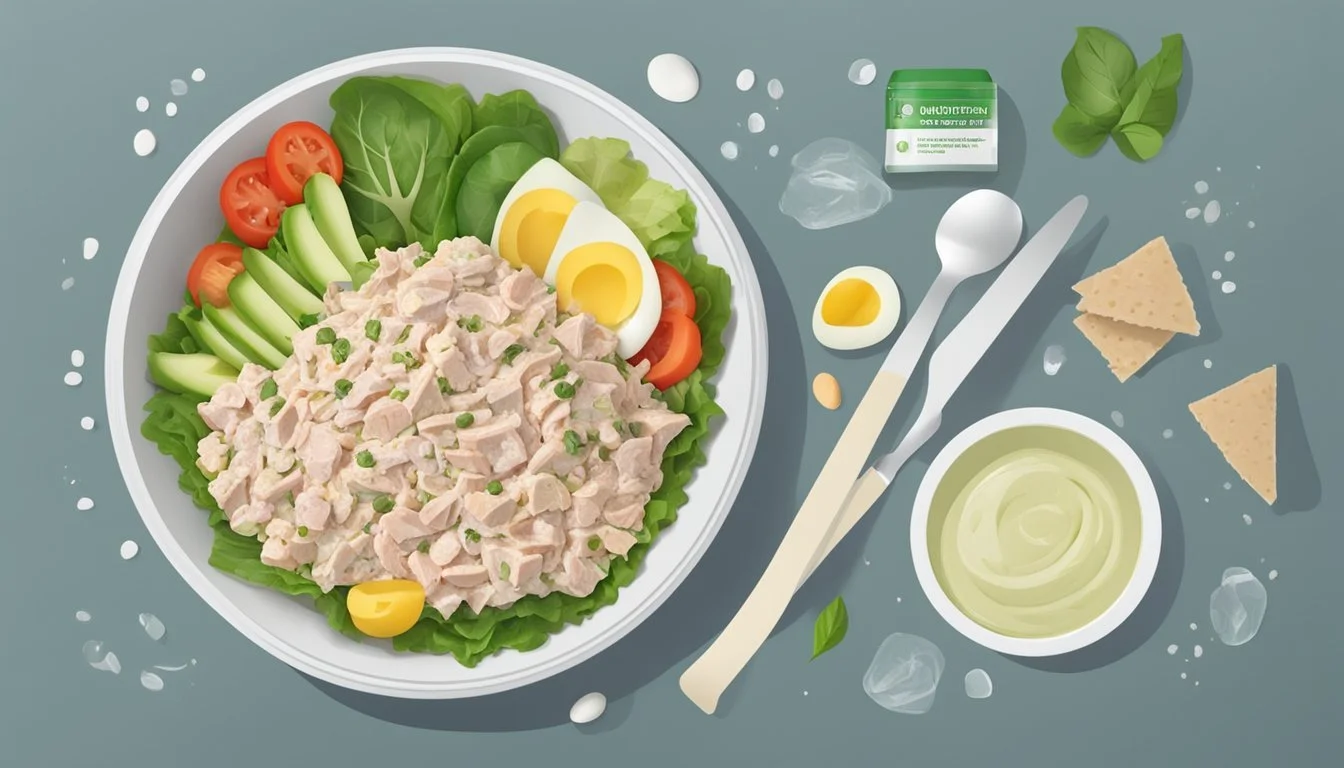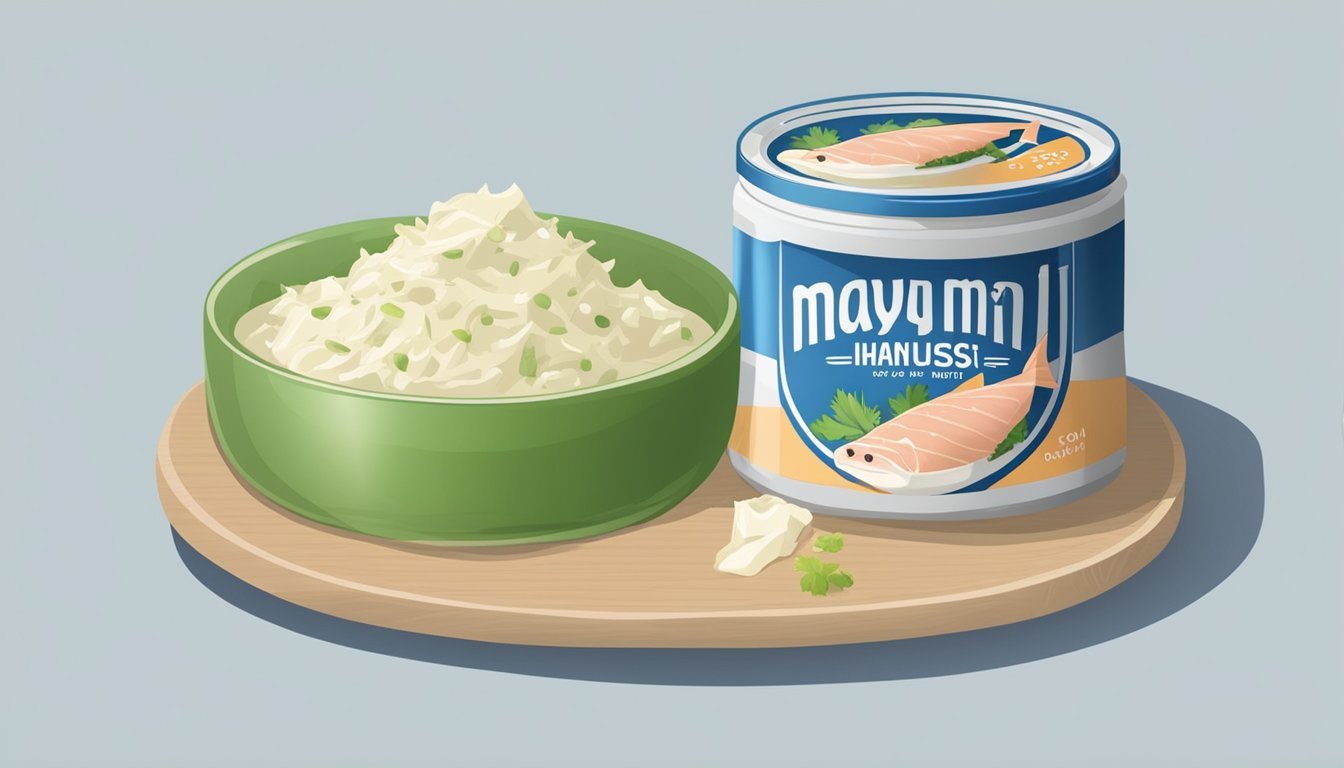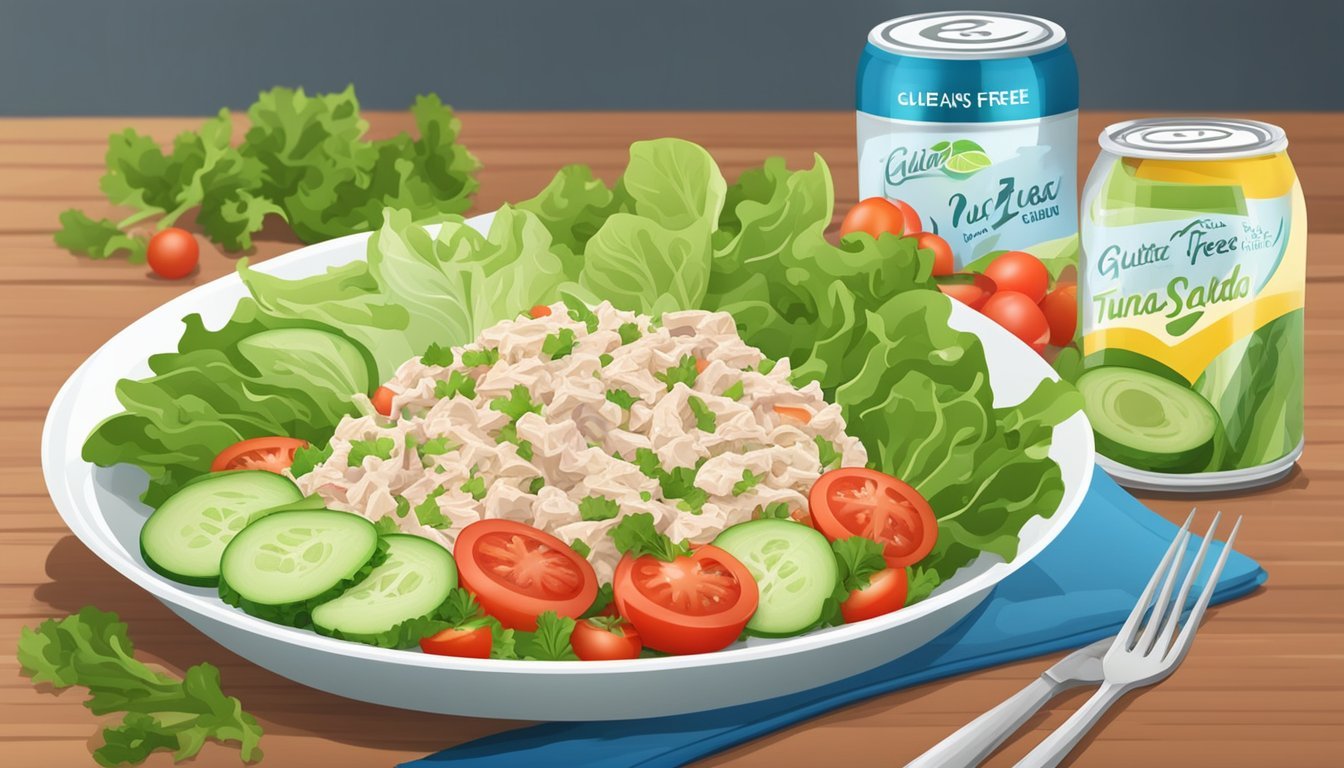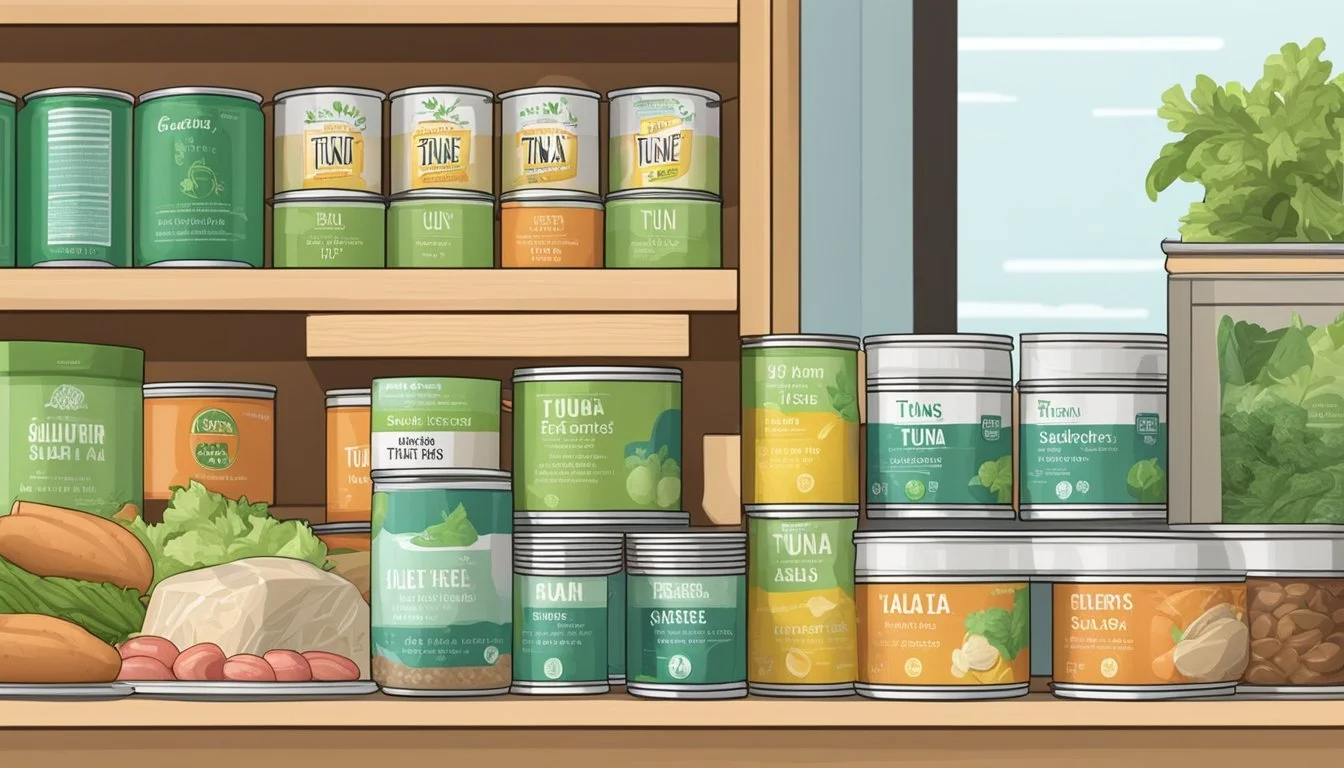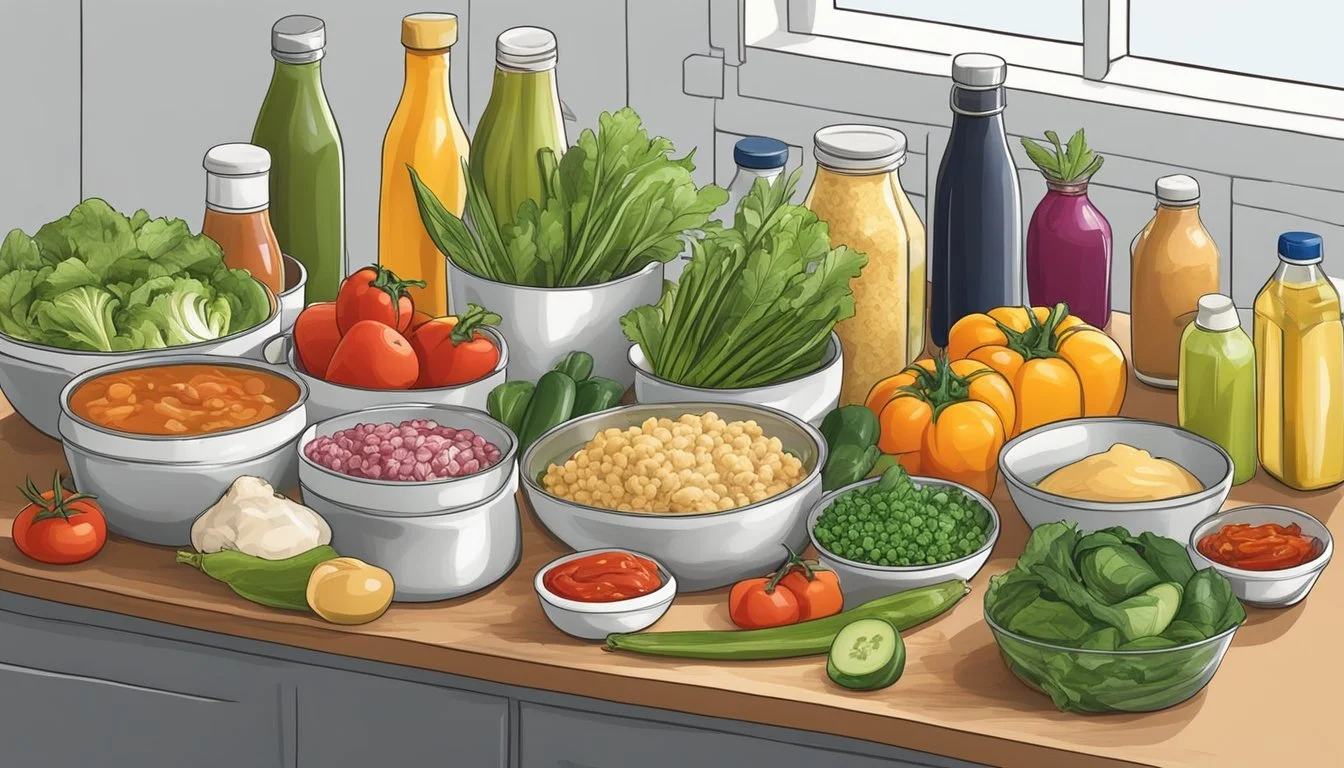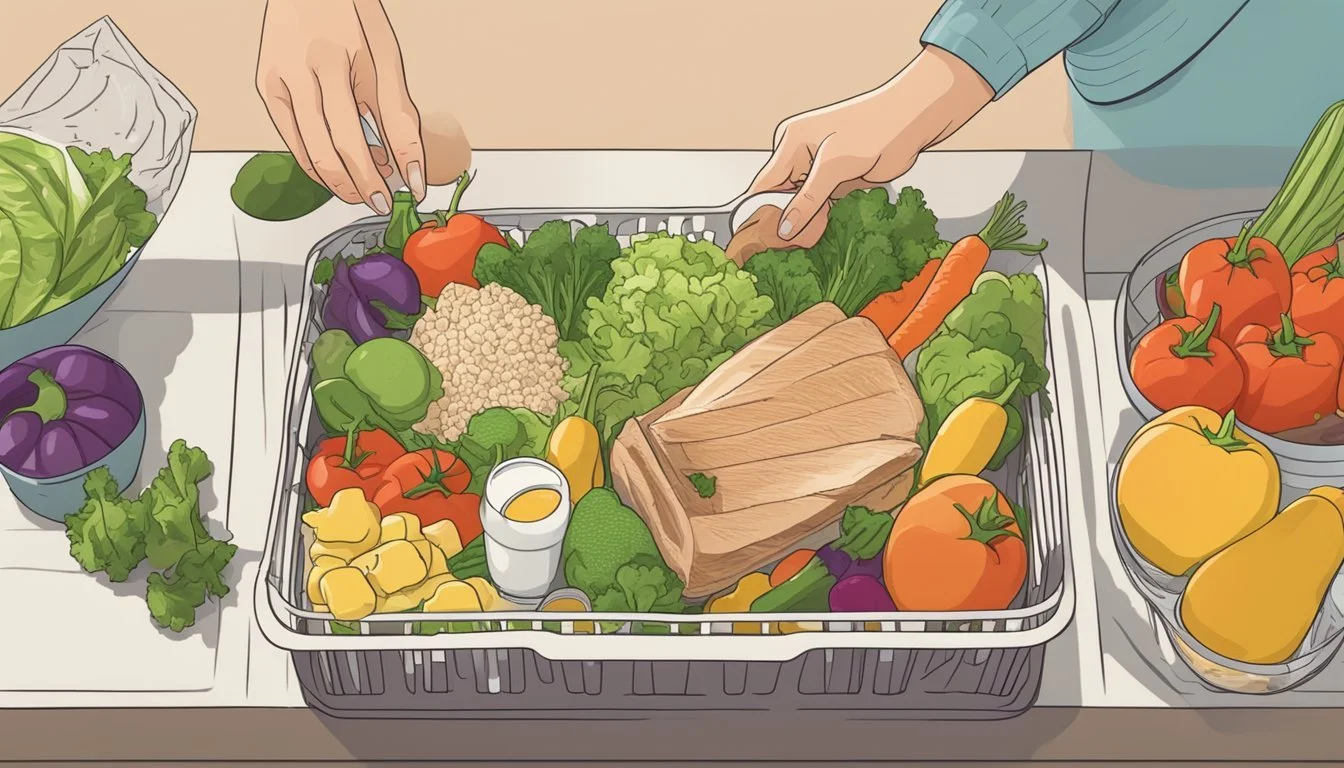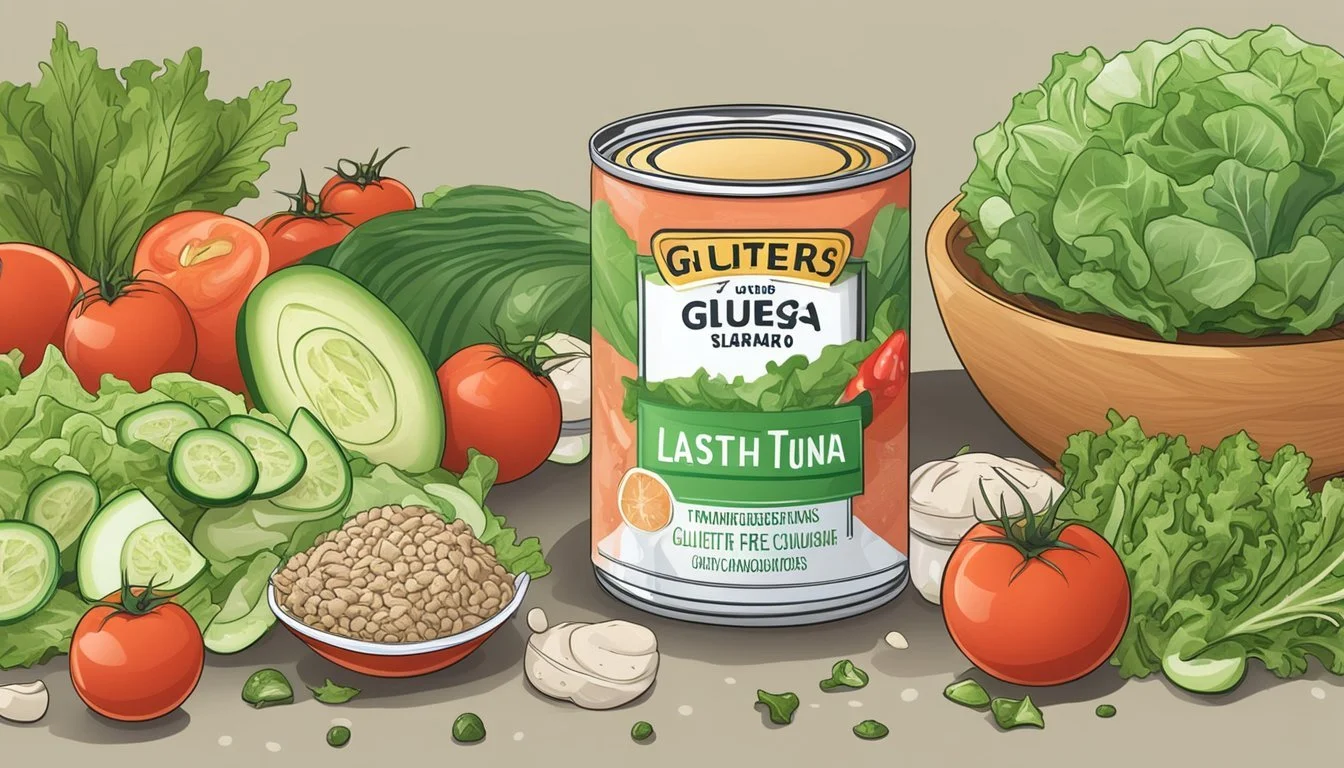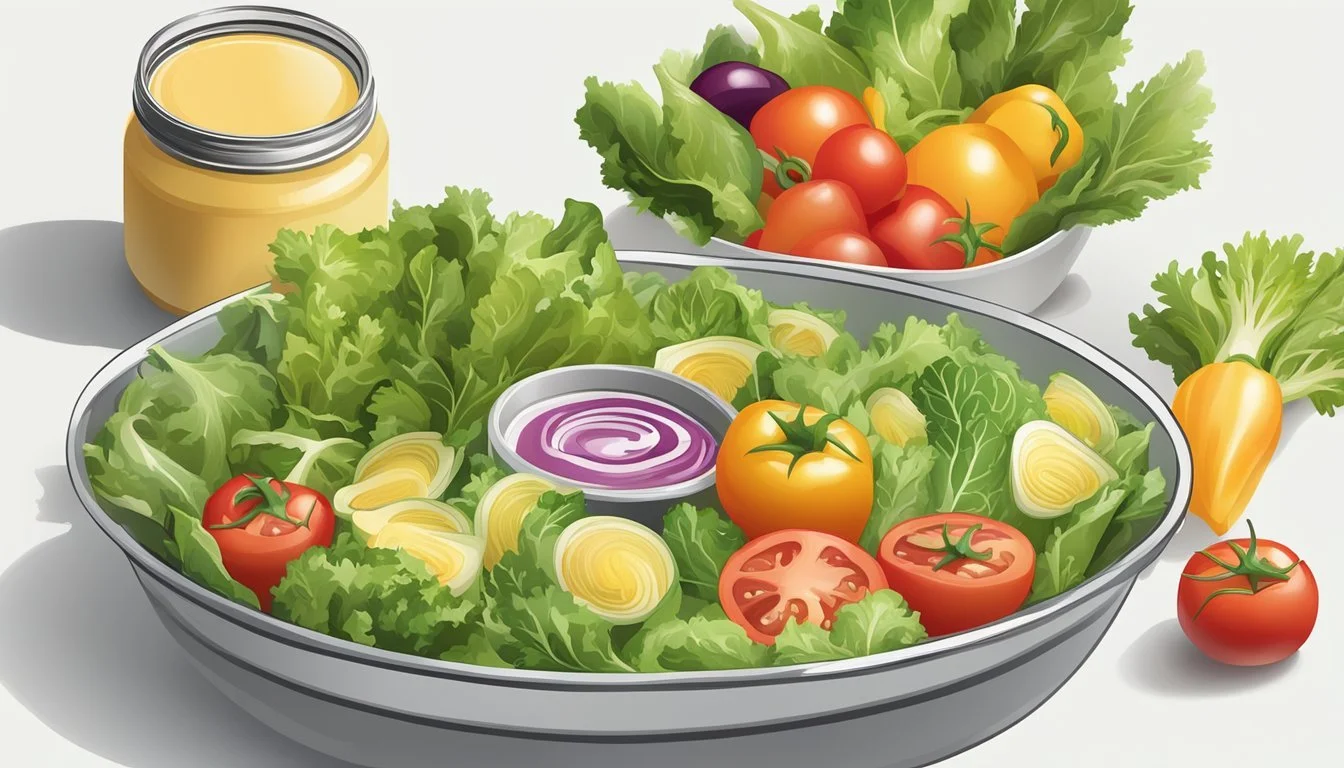Is Tuna Salad Gluten-Free?
Determining the Safety for Gluten-Sensitive Dieters
When considering dietary restrictions, gluten is a common concern, and those with celiac disease or gluten sensitivity must be vigilant about the foods they consume. Tuna (What wine goes well with tuna?) salad is a popular dish, loved for its simplicity and flavor. The basic ingredients of a traditional tuna salad are typically gluten-free. These include canned tuna, mayonnaise, and various fresh vegetables or herbs. Since tuna itself does not contain gluten—a protein found in wheat, barley, and rye—it can be a safe choice for a gluten-free diet.
However, complications arise when additional ingredients are added or when considering how the tuna is processed. Some preparations of tuna salad may include additives or seasonings that contain gluten. It’s essential to check the labels of ingredients like mayonnaise and any other condiments or spices used to ensure they are certified gluten-free. For individuals with serious gluten intolerances or celiac disease, cross-contamination is also a risk factor, particularly in restaurant or deli settings where gluten-containing foods are prepared in the same area.
Furthermore, when selecting canned tuna, one must be cautious and read labels carefully. While plain canned tuna should be safe for those avoiding gluten, some canned versions may contain broths or other additives that introduce gluten into the product. Always look for cans labeled as gluten-free, and for individuals making tuna salad at home, choosing ingredients that are certified gluten-free and preparing the dish in a gluten-free environment will help prevent any unintentional gluten exposure.
Understanding Gluten in Foods
Gluten is a group of proteins present in grains such as wheat, barley, and rye. It gives dough its elasticity and breads their airy structure. However, gluten can cause health issues for individuals with celiac disease or gluten sensitivities.
Gluten-free foods are those without these proteins and are essential for a safe diet in affected individuals. These foods are made from alternative grains and flours that do not contain gluten, such as rice, quinoa, and corn.
Protein: Foods can be gluten-free and still high in protein. Tuna, for example, is naturally gluten-free and serves as an excellent source of this macronutrient.
Carbohydrates and Fiber: Gluten-free products can also provide necessary carbohydrates and fiber. However, the source of these nutrients shifts from gluten-containing grains to fruits, vegetables, and grain substitutes like buckwheat or amaranth.
Cuisine: Many cuisines offer gluten-free options, enhancing inclusivity and ensuring that individuals with dietary restrictions can enjoy diverse flavors and dishes without gluten.
Healthy: A gluten-free diet is not inherently healthier for the general population but is crucial for those with celiac disease or gluten intolerance. For these individuals, consuming gluten-free foods is the key to maintaining their health.
While foods like tuna salad can be gluten-free, it is vital to ensure that no gluten-containing ingredients are used in preparation, especially in dressings or additives. Always read labels or inquire about ingredients when dining out.
Ingredients in Traditional Tuna Salad
Traditional tuna salad is comprised of several key components that bring together its creamy texture and refreshing taste. The following are common ingredients found in a typical tuna salad recipe:
Tuna: The star of the dish, usually canned and available in water or oil. It's rich in protein and omega-3 fatty acids.
Mayonnaise: Adds creaminess and binds the salad together. For a lighter version, some use Greek yogurt.
Celery: Provides a crunchy texture and a fresh taste.
Onion: Red onions (What wine goes well with onions?) are often chosen for their mild flavor.
Fresh herbs: Parsley and dill are popular for enhancing the flavor.
Lemon juice: Offers a zest that brightens up the salad.
Salt and Pepper: Essential seasonings for taste.
Optional additions to tuna salad might include chopped hard-boiled eggs, pickles or relish, chopped tomato, or a pinch of sugar for a touch of sweetness.
Nutrient Impact Calories Moderate, primarily from mayonnaise. Fat Depends on the mayo used; alternatives can reduce fat content. Sodium Can be high due to canned tuna and added salt. Monitor for dietary concerns.
Those adhering to a gluten-free diet should ensure that all packaged ingredients, especially mayonnaise, are labeled as gluten-free to avoid cross-contamination. Fresh ingredients do not naturally contain gluten. Adjustments to traditional recipes can be made to suit dietary requirements without sacrificing taste or nutritional value.
Preparing Gluten-Free Tuna Salad
When it comes to making a gluten-free tuna salad, one must select ingredients carefully to ensure the dish remains free of gluten. The foundation of any tuna salad is, of course, the tuna. Opting for canned albacore tuna or light canned tuna ensures a healthy and nutritious base. It's crucial to check the labels for any gluten-containing additives.
Ingredients:
Canned albacore tuna, drained
Gluten-free pasta (What wine goes well with pasta?) (optional for pasta salad)
Cucumber, diced
Fresh parsley, chopped
Veggies such as broccoli, finely chopped
Capers (optional)
Fresh herbs for additional flavor
Olive oil or dairy-free, egg-free creamy options like vegan mayo or Greek yogurt
Seasonings such as salt, pepper, and additional herbs to taste
In preparing the salad, begin by mixing the tuna with a choice of creamy binding agent, like vegan mayo or Greek yogurt, to keep it dairy-free and egg-free. Add diced cucumber, fresh parsley, and any desired veggies such as broccoli for crunch and nutrition. For those opting to make a pasta salad variant, cook the gluten-free pasta according to the package directions, drain, and then cool it to room temperature before mixing with the tuna.
Directions:
Combine the drained tuna with olive oil or your choice of vegan mayo or Greek yogurt for creaminess.
Stir in the cucumber, parsley, veggies, capers, and fresh herbs.
Season with salt, pepper, and any other preferred seasoning.
(For pasta salad) Mix in the cooled gluten-free pasta.
The preparation time is usually brief, and no cook time is required unless one is making a pasta salad, which adds the time needed to boil the pasta. The total time to prepare gluten-free tuna salad is typically under 30 minutes, making it a quick and easy lunch recipe. To maintain freshness, store the salad in an airtight container and consume it within a few days. This salad is not only simple and bright but also versatile and perfect for a healthy lunch.
Adapting Tuna Salad for Various Dietary Needs
Tuna salads (What wine goes well with salads?) are versatile and can be adapted to meet a variety of dietary restrictions, including gluten-free, dairy-free, and egg-free requirements. To ensure a tuna salad is gluten-free, one should use gluten-free pasta or omit it entirely. For a dairy-free version, any cheese or dairy-based dressings must be avoided or substituted with plant-based alternatives.
Ingredients for Gluten-Free Tuna Salad:
Gluten-free pasta or alternatives like zucchini noodles
Tuna (ensure it's not marinated in a sauce containing gluten)
Fresh vegetables (celery, onions, etc.)
Making Tuna Salad Dairy-Free:
Use dairy-free yogurt or vegan mayo as a substitute for traditional mayonnaise.
Skip cheese or opt for a dairy-free cheese product.
Furthermore, for individuals avoiding eggs, egg-free mayonnaise options are available that use aquafaba or plant-based proteins to emulate the texture and taste of conventional mayo.
Adapting Tuna Salad to Vegan Preferences:
Replace tuna with mashed chickpeas for a similar texture.
Utilize vegan mayo made from soy or other plant oils.
Double-check dressings and seasonings to ensure they are vegan-friendly.
Dietary Need Substitute Gluten-Free Gluten-free pasta or zucchini noodles Dairy-Free Dairy-free yogurt or vegan mayo Egg-Free Egg-free vegan mayo
By carefully selecting ingredients and utilizing suitable substitutes, one can prepare a tuna salad that meets these dietary needs without compromising on flavor or texture. It is always important to read labels for hidden allergens and cross-contamination warnings.
Nutritional Information and Benefits
Tuna salad is recognized for its protein content, a key nutrient in any diet. Traditionally, tuna provides a rich source of high-quality protein with relatively low calories. The presence of omega-3 fatty acids in tuna is associated with numerous health benefits, including heart health.
Nutritional Profile per Serving: (Note that values may vary based on ingredients used)
Calories: Approx. 150-200
Carbohydrates: 0-5g
Fat: 1-5g (mostly unsaturated fats)
Sodium: 200-300mg
Cholesterol: 30-40mg
Fiber: 0-1g
Protein: 20-30g
Vitamin C: Varies by recipe
Calcium: Varies by recipe
Iron: 1-1.5mg
Nutrients: Includes B vitamins, phosphorus, selenium, and magnesium
In its simplest form, tuna salad consists of tuna and mayonnaise, but ingredients like celery, onion, and herbs can be added for flavor and additional nutrients. It's important to consider the type of mayonnaise used, as it can add to the saturated fat and calorie content. Choosing reduced-fat or alternative options such as yogurt can make for a healthier dish.
For those attentive to gluten, tuna itself is gluten-free. However, one must be cautious with additives in certain canned tuna and with the ingredients mixed into tuna salad, such as dressings or croutons, that could contain gluten.
The key to a nutritious tuna salad lies in the balance of ingredients. For individuals monitoring their sodium intake, fresh or water-packed tuna is preferable over oil-packed options. Including vegetables not only adds fiber and vitamins but also enhances the texture and flavor of the salad.
Serving Suggestions and Meal Ideas
When considering if tuna salad is gluten-free, it's not just about the ingredients but also the serving methods that ensure it stays safe for those with gluten sensitivities.
For lunch, a gluten-free tuna pasta salad can be a nourishing choice. One can prepare it with gluten-free pasta and ensure all condiments, such as mayonnaise, are labeled gluten-free. This salad can be a complete meal on its own or served as a side dish.
Meal Prep: Gluten-free tuna salad is ideal for meal prep as it can be stored in the refrigerator and enjoyed over several days. When prepping, store in an airtight container to maintain freshness.
Courses: As a versatile dish, it can serve as an appetizer or a main course for dinner. When served in smaller portions, it complements the main entrée without overshadowing it.
Picnics and Potlucks: Gluten-free tuna pasta salad is transportable, making it an excellent choice for picnics or potlucks. Ensure that it's kept chilled to maintain safety and freshness.
For a varied lunch idea, consider the following options:
Gluten-Free Wrap: Serve the tuna salad in a gluten-free tortilla.
Lettuce Cups: Scoop the salad into fresh lettuce leaves for a low-carb option.
With Fresh Vegetables: Accompany the tuna salad with slices of cucumber or bell peppers.
Leftovers should be refrigerated and consumed within 3-4 days for safety and best flavor. Always store in a sealed container to avoid cross-contamination with gluten-containing products.
Storage and Shelf Life
When considering the shelf life of gluten-free tuna salad, the same principles apply as with any other tuna salad. It is safe to consume for 3-5 days when stored properly in the refrigerator. Storage should be at a temperature of 40°F (4°C) or lower to minimize the risk of bacterial growth.
Proper Storage Practices:
Airtight Container: Tuna salad should be placed in an airtight container to keep out contaminants and prevent the absorption of odors from other foods in the refrigerator.
Prompt Refrigeration: To preserve its freshness, leftovers should promptly make their way back to the refrigerator within 2 hours of serving.
Notable Considerations:
Ingredients: The shelf life may vary slightly depending on the freshness of the ingredients used to prepare the salad.
Cross-Contamination: For individuals with gluten sensitivities, it's crucial to avoid cross-contamination with gluten-containing products during preparation and storage.
Maintaining the quality of gluten-free tuna salad involves diligent application of these storage techniques. It's important for consumers to periodically check the salad for any changes in color, texture, or odor, as these can be indicators that the food is no longer safe to consume. If there is any doubt about the freshness of the salad, it is best to err on the side of caution and dispose of it.
Tuna Salad Variations and Recipes
When considering whether tuna salad is gluten-free, one must examine the ingredients involved. Traditional tuna salad is typically gluten-free, consisting of ingredients such as canned tuna, mayonnaise, and various seasonings. However, when recipes introduce items like pasta, the gluten content will depend on the type of pasta used.
Gluten-Free Tuna Pasta Salad: A popular variation is the Tuna Pasta Salad, which can be made gluten-free by choosing appropriate pasta options. Ingredients such as gluten-free pasta made from rice, corn, or quinoa work exceptionally well. To prepare:
Cook the gluten-free pasta according to the package instructions.
Drain and rinse the pasta with cold water.
In a separate bowl, combine mayonnaise, chopped celery, diced onion, lemon juice, dill, salt, and pepper.
Gently mix the pasta with the mayo dressing and add flaked tuna and peas if desired.
Tuna Macaroni Salad: The Tuna Macaroni Salad, another favorite, also easily converts to a gluten-free version by using gluten-free macaroni. The list of ingredients often includes:
Gluten-free macaroni pasta
Canned tuna
Mayonnaise
Diced vegetables such as celery, onions, and bell peppers
Seasonings to taste
Recipe Card for Tuna Salad: A basic Tuna Salad recipe often includes the following components:
Canned Tuna: Drained and flaked
Mayonnaise: For creaminess
Sour Cream: Optionally mixed with mayo for tanginess
Vegetables: Such as celery or onions for crunch
Seasonings: Including salt, pepper, and herbs like dill or parsley
Lettuce: To serve as a bed for the salad, or mixed in for additional texture
Each recipe can be adapted to be gluten-free by ensuring gluten-free status of condiments and additions used. For instance, when using mayonnaise or sour cream, it's crucial to check that they haven't been cross-contaminated with gluten-containing ingredients.
Tips for Shopping and Preparing Ingredients
When shopping for ingredients to prepare gluten-free tuna salad, individuals must be vigilant in checking labels to ensure the absence of gluten-containing ingredients. Gluten-free pasta is readily available in many grocery stores; one should opt for pasta made from rice, corn, or legumes for a gluten-free option. It is vital to read the packaging carefully, as some pastas may be produced in facilities that handle wheat.
For making the salad, the following ingredients are recommended for freshness and simplicity:
Fresh vegetables: Celery and onion add a satisfying crunch, while options like red onion or additional greens can impart extra flavor and nutrients.
Canned tuna: Look for cans labeled "dolphin-safe" to support sustainable fishing practices. The tuna should be preserved in water or olive oil to avoid unwanted additives.
Dressing: A combination of mayonnaise and yogurt provides a creamy base; one can find gluten-free mayonnaise on the market. Opting for plain, full-fat varieties will yield a richer taste.
Purchasing fresh lemon juice or squeezing lemons at home is preferred over bottled varieties for an authentic zest. As for herbs like dill, fresh is best, but dried dill can also suffice; the key lies in incorporating it to taste.
Here's a simple shopping list summary utilizing bold formatting for emphasis on gluten-free items:
Gluten-free pasta (rice, corn, or legume-based)
Canned tuna (water or olive oil-packed, "dolphin-safe")
Celery
Onion (red or yellow)
Mayonnaise (gluten-free)
Plain yogurt (full-fat recommended)
Fresh lemon or fresh lemon juice
Dill (fresh or dried)
Salt and pepper
When preparing gluten-free tuna salad, keep all cooking utensils and surfaces thoroughly cleaned to avoid cross-contamination with gluten. Begin by cooking the gluten-free pasta as per the package instructions, then combine with other ingredients in a manner that preserves the integrity of each component, stirring gently to distribute flavors evenly.
Common Mistakes to Avoid
When preparing a gluten-free tuna salad, individuals must be cautious not to inadvertently include gluten-containing ingredients. Here are some common errors:
Assuming All Tuna is Gluten-Free: Not all canned tuna is free from gluten. One should always check the labels for gluten-free certification, as some may contain gluten through added broths or thickeners.
Neglecting Add-ins and Dressings: Some mayonnaise brands, often a key ingredient in tuna salad, might contain gluten. Similarly, pickles, relishes, or salad dressings used for flavor could be culprits. It is essential to confirm that all condiments and add-ins are labeled gluten-free.
Cross-Contamination Risks: Using utensils or surfaces that have been in contact with gluten can contaminate the salad. Maintain strict kitchen hygiene and separate prep areas and utensils for gluten-free food preparation.
Improper Reading of Labels: Gluten can lurk under names like malt, wheat starch, or hydrolyzed vegetable protein. Careful scrutiny of ingredient lists is required to avoid gluten.
Tips for a Safe Gluten-Free Tuna Salad:
Choose Plain Tuna: Opt for plain canned tuna in water or olive oil without added flavors or ingredients.
Verify Add-ins: Ensure all additional ingredients such as vegetables and herbs are fresh and uncontaminated.
Gluten-Free Alternatives: For a nutritious touch, include gluten-free whole grains like quinoa or brown rice.
Homemade Dressings: Consider making homemade dressings with known ingredients to assure a healthy and gluten-free mixture.
By ensuring attention to detail, one can create a nutritious and safe gluten-free tuna salad.
Conclusion
In assessing whether tuna salad is gluten-free, one must consider each ingredient. Tuna itself is inherently gluten-free, providing a safe protein source for individuals with celiac disease or gluten sensitivity. However, additives and seasonings in certain canned tuna products may introduce gluten. It is crucial for consumers to read labels carefully and look for any gluten-containing ingredients when selecting canned tuna.
When preparing a gluten-free tuna salad, individuals are encouraged to use gluten-free mayonnaise and avoid cross-contamination with gluten-containing products. The salad can include gluten-free ingredients such as:
Diced celery
Red onion
Mixed greens
Tomato wedges
If store-bought or pre-packaged tuna salad options are considered, vigilance is necessary. One must ensure that no gluten-containing ingredients, such as croutons or certain dressings, are present. Homemade preparations often offer a safer alternative, as one can manage the ingredient selection and preparation environment.
For those requiring a strict gluten-free diet, homemade tuna salad presents an opportunity to enjoy a nutritious and safe meal, provided all ingredients and utensils used are free from gluten contamination.


